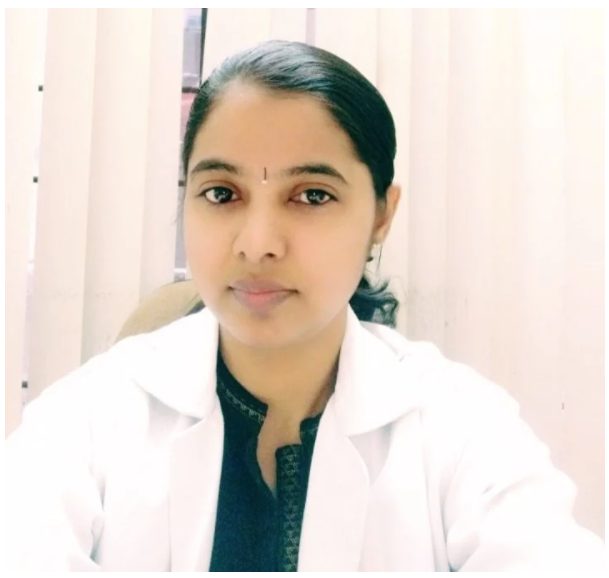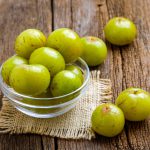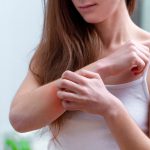Ashwagandha in Sanskrit means “smell of the horse” to correlate it with the strength of…
Read MorePimples – we’ve all had them and we all hate them. And if you’ve ever stared at the mirror wondering what you’re going to do about that huge zit on your face we’ve got a few simple home remedies that can help you deal.
But first let’s understand how pimples develop in the first place. Pimples form when your hair follicles (which are tiny pores in your skin out of which hair grows) become clogged with oil (sebum) and dead skin cells. Hormonal factors can cause sebum producing glands which are attached to hair follicles to produce extra oil or sebum. The extra oil then triggers a normally harmless skin bacterium known as Propionibacterium acnes, to become more aggressive and cause the development of pus and inflammation. In short, the four main factors that lead to the development of acne are: excess sebum or oil production, the clogging of hair follicles, bacteria, and inflammation.[1][Acne].Mayo Clinic. [2][Acne].NHS.
Ancient ayurvedic texts refer to acne as ‘yuvan pidika’ because it commonly develops during adolescence (yuva). Because it’s inflammatory in nature and can cause scars it’s also referred to as ‘mukhadushika’. An imbalance in kapha dosha, vata dosha and rakta dhatu (blood) are considered to lead to the development of acne. Lifestyle factors such as excessive sleep, insomnia, excessive consumption of spicy, sweet, or oily food etc. are thought to contribute to the development of pimples. As are psychological factors like stress, anger, and irritation.[3] Upasani, Sachin Anil, and S. U. Nipanikar. “Review on Yuvanpidika vis-a-vis acne vulgaris.” Int J Pharm Pharm Res 5, no. 3 (2016): 77-94.
Here are a few home remedies that can be helpful in dealing with pimples:
The answer to your acne woes might be sitting in your spice box – turmeric. According to research turmeric can regulate the excessive production of sebum. This effect is thought to be due to its ability to inhibit the enzyme 5α-reductase and thereby impact hormones that affect sebum production.[4]Zaman, S. U., and Naveed Akhtar. “Effect of turmeric (Curcuma longa Zingiberaceae) extract cream on human skin sebum secretion.” Tropical Journal of Pharmaceutical Research 12, no. 5 … Continue readingTurmeric has also been found to inhibit inflammation caused by Propionibacterium acnes which plays a significant role in the development of acne.[5]Jain, A., and E. Basal. “Inhibition of Propionibacterium acnes-induced mediators of inflammation by Indian herbs.” Phytomedicine 10, no. 1 (2003): 34-38.
Manjistha has traditionally been used in ayurveda to treat skin disorders. According to a study, manjistha can inhibit the growth of the bacteria Propionibacterium acnes which contributes to the development of acne. It’s antioxidant property is also beneficial as it can counter oxidative stress which plays a role in the development of acne.[6]Gorle, Archana M., and Swati S. Patil. “Evaluation of antioxidant and antiacne property of Rubia cordifolia.” Der Pharmacia Sinica 1, no. 3 (2010): 59-63.
Neem is another medicinal plant that has traditionally been used to tackle acne. And this remedy has scientific backing too. One study found that the application of neem paste was effective at dealing with acne in teenagers. The antibacterial and anti-inflammatory properties of neem are thought to be responsible for this beneficial effect.[7]Satralkar, S.; Zagade, T.B. “Effectiveness of Application of Neem Paste on Face Acne among Teenagers in Selected Area of Sangli, Miraj and Kupwad Corporation.” Intern J Sci Res, 2019, 8(6), … Continue reading
Yes, drinking green tea is great for your health. But did you know that using this antioxidant rich brew topically can help you get rid of acne? One study observed that applying a lotion that contained green tea twice a day, reduced pimples by 58.33% in six weeks.[9]Elsaie, Mohamed L., Mahmoud F. Abdelhamid, Lotfy T. Elsaaiee, and Hanaa M. Emam. “The efficacy of topical 2% green tea lotion in mild-to-moderate acne vulgaris.” Journal of drugs in … Continue reading Like turmeric, green tea too has been found to reduce sebum production by inhibiting the enzyme 5α-reductase which impact hormones that affect sebum production.[10]Mahmood, T., N. Akhtar, and C. Moldovan. “A comparison of the effects of topical green tea and lotus on facial sebum control in healthy humans.” Hippokratia 17, no. 1 (2013): 64.
Tea tree oil has traditionally been used by aboriginal Australians to fight skin infections. And according to research it acts against acne promoting bacteria too. Beneficial compounds present in this essential oil such as terpinen-4-ol, α-terpine, and α-pinene are considered to account for its antibacterial property.[11]Raman, A., U. Weir, and S. F. Bloomfield. “Antimicrobial effects of tea‐tree oil and its major components on Staphylococcus aureus, Staph. epidermidis and Propionibacterium acnes.” … Continue reading
Arjuna is valued in ayurveda for its many medicinal benefits – it has antioxidant, anti-atherogenic, hypotensive, anti-inflammatory, and anti-carcinogenic properties. And yes, it can take care of that humble pimple too. Research indicates that it acts against bacteria such as Propionibacterium acnes which can trigger acne.[12]Vijayalakshmi, A., A. Tripura, and V. Ravichandiran. “Development and evaluation of anti-acne products from Terminalia arjuna bark.” Int J Chem Tech Res 3 (2011): 320-27.
Tulsi or holy basil is considered sacred by many communities in India. And it’s widely used in Ayurveda for its many medicinal properties. It’s also a great natural remedy for pimples. The essential oil of tulsi is effective against Propionibacterium acnes bacteria.[13]Lertsatitthanakorn, P., S. Taweechaisupapong, C. Aromdee, and W. Khunkitti. “In vitro bioactivities of essential oils used for acne control.” International Journal of Aromatherapy 16, no. … Continue reading
Amla – these tasty sour fruits pack quite an antioxidant punch due to the presence of compounds such as ascorbic acid and gallic acid. And their powerful antioxidant properties can be useful in dealing with acne.[14]Kanlayavattanakul, M., and N. Lourith. “Therapeutic agents and herbs in topical application for acne treatment.” International journal of cosmetic science 33, no. 4 (2011): 289-297. Research also indicates that amla be beneficial if you have oily skin since it can help reduce sebum.[15]Timudom, Thanaroat, Chaiyavat Chaiyasut, Bhagavathi Sundaram Sivamaruthi, Pratya Tiampasook, and Duangporn Nacapunchai. “Anti-Sebum Efficacy of Phyllanthus emblica L.(Emblica) Toner on Facial … Continue reading
Chamomile is another natural remedy that can help you beat acne. Research shows that it’s effective against the acne causing bacteria – Propionibacterium acnes.[16]Zu, Yuangang, Huimin Yu, Lu Liang, Yujie Fu, Thomas Efferth, Xia Liu, and Nan Wu. “Activities of ten essential oils towards Propionibacterium acnes and PC-3, A-549 and MCF-7 cancer … Continue reading It also has anti-inflammatory and antioxidant properties that can be helpful in dealing with pimples.[17]Gardiner, Paula. “Chamomile (Matricaria recutita, Anthemis nobilis).” Longwood herbal task force (1999): 1-21.
Here’s another remedy for pimples that can be found on your kitchen shelf – cinnamon and honey. Both these sweet ingredients work against acne causing bacteria on their own. And one study found that they’re more potent as a combo.[18]Julianti, Elin, Kasturi K. Rajah, and Irda Fidrianny. “Antibacterial activity of ethanolic extract of cinnamon bark, honey, and their combination effects against acne-causing bacteria.” … Continue reading Research also shows that cinnamon has beneficial anti-inflammatory properties.[19]Han, Xuesheng, and Tory L. Parker. “Antiinflammatory activity of cinnamon (Cinnamomum zeylanicum) bark essential oil in a human skin disease model.” Phytotherapy Research 31, no. 7 … Continue reading
Here are a few general skin care tips to keep in mind while dealing with pimples:
References
| ↑1 | [Acne].Mayo Clinic. |
|---|---|
| ↑2, ↑20 | [Acne].NHS. |
| ↑3 | Upasani, Sachin Anil, and S. U. Nipanikar. “Review on Yuvanpidika vis-a-vis acne vulgaris.” Int J Pharm Pharm Res 5, no. 3 (2016): 77-94. |
| ↑4 | Zaman, S. U., and Naveed Akhtar. “Effect of turmeric (Curcuma longa Zingiberaceae) extract cream on human skin sebum secretion.” Tropical Journal of Pharmaceutical Research 12, no. 5 (2013): 665-669. |
| ↑5 | Jain, A., and E. Basal. “Inhibition of Propionibacterium acnes-induced mediators of inflammation by Indian herbs.” Phytomedicine 10, no. 1 (2003): 34-38. |
| ↑6 | Gorle, Archana M., and Swati S. Patil. “Evaluation of antioxidant and antiacne property of Rubia cordifolia.” Der Pharmacia Sinica 1, no. 3 (2010): 59-63. |
| ↑7 | Satralkar, S.; Zagade, T.B. “Effectiveness of Application of Neem Paste on Face Acne among Teenagers in Selected Area of Sangli, Miraj and Kupwad Corporation.” Intern J Sci Res, 2019, 8(6), 1387-1396. |
| ↑8 | Gamwell, Calvert. 95 Surprisingly Effective Natural Ways to Fight Acne. Human Innovation Labs, 2011. |
| ↑9 | Elsaie, Mohamed L., Mahmoud F. Abdelhamid, Lotfy T. Elsaaiee, and Hanaa M. Emam. “The efficacy of topical 2% green tea lotion in mild-to-moderate acne vulgaris.” Journal of drugs in dermatology: JDD 8, no. 4 (2009): 358-364. |
| ↑10 | Mahmood, T., N. Akhtar, and C. Moldovan. “A comparison of the effects of topical green tea and lotus on facial sebum control in healthy humans.” Hippokratia 17, no. 1 (2013): 64. |
| ↑11 | Raman, A., U. Weir, and S. F. Bloomfield. “Antimicrobial effects of tea‐tree oil and its major components on Staphylococcus aureus, Staph. epidermidis and Propionibacterium acnes.” Letters in applied microbiology 21, no. 4 (1995): 242-245. |
| ↑12 | Vijayalakshmi, A., A. Tripura, and V. Ravichandiran. “Development and evaluation of anti-acne products from Terminalia arjuna bark.” Int J Chem Tech Res 3 (2011): 320-27. |
| ↑13 | Lertsatitthanakorn, P., S. Taweechaisupapong, C. Aromdee, and W. Khunkitti. “In vitro bioactivities of essential oils used for acne control.” International Journal of Aromatherapy 16, no. 1 (2006): 43-49. |
| ↑14 | Kanlayavattanakul, M., and N. Lourith. “Therapeutic agents and herbs in topical application for acne treatment.” International journal of cosmetic science 33, no. 4 (2011): 289-297. |
| ↑15 | Timudom, Thanaroat, Chaiyavat Chaiyasut, Bhagavathi Sundaram Sivamaruthi, Pratya Tiampasook, and Duangporn Nacapunchai. “Anti-Sebum Efficacy of Phyllanthus emblica L.(Emblica) Toner on Facial Skin.” Applied Sciences 10, no. 22 (2020): 8193. |
| ↑16 | Zu, Yuangang, Huimin Yu, Lu Liang, Yujie Fu, Thomas Efferth, Xia Liu, and Nan Wu. “Activities of ten essential oils towards Propionibacterium acnes and PC-3, A-549 and MCF-7 cancer cells.” Molecules 15, no. 5 (2010): 3200-3210. |
| ↑17 | Gardiner, Paula. “Chamomile (Matricaria recutita, Anthemis nobilis).” Longwood herbal task force (1999): 1-21. |
| ↑18 | Julianti, Elin, Kasturi K. Rajah, and Irda Fidrianny. “Antibacterial activity of ethanolic extract of cinnamon bark, honey, and their combination effects against acne-causing bacteria.” Scientia pharmaceutica 85, no. 2 (2017): 19. |
| ↑19 | Han, Xuesheng, and Tory L. Parker. “Antiinflammatory activity of cinnamon (Cinnamomum zeylanicum) bark essential oil in a human skin disease model.” Phytotherapy Research 31, no. 7 (2017): 1034-1038. |


Dr. Manjula has 12 years of experience in the field of Ayurveda and worked as a Consultant and General Physician for over 5 years before starting her private practice. In addition to BAMS, she also has an Advanced Diploma in Clinical Research and is trained in Panchkarma. She is an expert at diagnosis of the root cause and planning effective treatment for multiple issues.

Ashwagandha in Sanskrit means “smell of the horse” to correlate it with the strength of…
Read More
Don’t all of us want healthy glowing skin? And while there is a ton of…
Read More
Most of us have experienced skin irritations at some point or the other. When the…
Read More
Healthy, radiant, youthful skin is something that we all desire. However, we might unwittingly have…
Read More